How to buy a bowling ball is not easy, so I created an easy a buying guide. I have wanted to do this for awhile now and finally got around to it. Maybe you need help with a first bowling ball purchase or you are thinking about replacing one you already bought.
Even if you are the beginner who has never bowled, or someone who has bowled very little. Chances are you have noticed that the bowling ball choices nowadays are overwhelming. So, I thought it would be helpful to include a guide on my site to help everyone who visits, by making it easier to make the best decision possible.
I hope I made it as simple as possible, but included the most important and helpful information with a twist. How to buy a bowling ball-made easy.
Affiliate Disclaimer:
If you find some products you like great! Some of my links contain affiliate links, which I do make a small profit on, but at no additional cost to you. These small fees help to support this site and bring the content to you.
Key Factors on How to Buy a Bowling Ball
When choosing a ball, there are some key factors to consider.We all have budget restrictions, and bowl on different conditions. The ball you are considering could be for a child or an adult.Our age and physical conditioning also come into play.These are some key factors to consider in choosing a bowling ball. So, let’s break them down into the key factors to consider.
- Cost – How much do you want to spend
- Lane oil – Are you bowling on dry to medium oil, or heavy lane oil
- Weight – How heavy is too heavy
The average weight for beginners is about 10% of your body weight. So, if a person weighs 100lbs, the ball should be 10lbs. This is just a guide, and many bowlers throw heavier or lighter balls and feel fine with it. Here is an average guide.
- Kids -under 11 or 12, the ball matches their age. They range 6-10lb balls normally
- Teenagers – range from 12 to the max weight 16lb
- Adult Women- usually feel comfortable around 12-14lb balls
- Adult Men-15-16lb balls
- Seniors- 12-14lb balls
Beginners
If you have never picked up a ball, or bowled a game before, then you need to try it first. Go to the local lanes, rent some shoes and try a house ball off the rack and see how you like the game.Try it for a few games, and maybe different weights in the house balls.
Ideally, you want to be able to bowl three games and not feel any fatigue. Don’t try to use a ball that is too heavy, it can cause injury. A lighter ball may help you.
After bowling a few games, you might be satisfied with using a straight ball technique. That’s fine. You could choose an inexpensive polyester ball. Others will want more of a challenge and have a desire to learn to hook bowl.
If so, then you may want a little more expensive ball. The choices are yours to make, and local pro shops can help a lot. Here is some basic information on bowling balls.
Bowling Ball Coverstock Types To Consider
It is the bowling ball coverstock types that we are referring to when we talk about different types of bowling balls. This is the outer surface of the ball.There are three main types of ball coverstocks available today, There are differences in the cores, but that will be discussed later.
- Polyester (plastic)
- Polyurethane (Urethane)
- Reactive Resin
Polyester Bowling Balls
This is the ball that is the cheapest to buy and would be for the complete beginner or someone who is bowling on dry lanes. This ball will not have any hooking ability and is primarily for bowlers who are satisfied with rolling the ball straight to the pocket.
A more advanced bowler could also use a plastic ball as a spare ball for converting corner pin spares. Some high-end plastic balls have a weight block, and give advanced bowlers the lowest hooking ball for dry lanes.
- Cost – generally cost $40 to $80 with some higher tech balls costing $100 or more. There are custom balls available costing $200 or more for special designs.
- Conditions- Dry lanes or spare ball use
- Weight – all weights available(6, 8-16lbs)
- Core Type- Mostly Asymmetric, a few Symmetric cores
- Performance rating – 0 to entry level
- 2 – Plastic Balls from $25 to $50
- 36 – Plastic Balls from $51 to $100
- 279 – Plastic Balls from $101 to $200
- 1 – Plastic Balls from $201 and above
Solid Core Plastic Balls Without a Weight Block
Look at the image of the core of the Pyramid Path Ball above. Notice, it has no core image inside of the ball. Those balls are solid core balls without any weight block. Balls that have no weight block are designed for going straight and having the least ability to hook. Consequently,this makes them a great ball for straight bowlers, or for a spare ball that does not hook.
Pancake or Very Small Weight Block
The smaller weight blocks are to help keep the ball stable and straight and give a bit of a harder hit to the pins.
They also mainly make-up for the weight lost when the finger holes are drilled into the ball.
It keep the ball from wobbling while it rolls down the lane and also ensure it has legal weight displacement.
The pancake block has very little effect on the hooking ability of the ball.
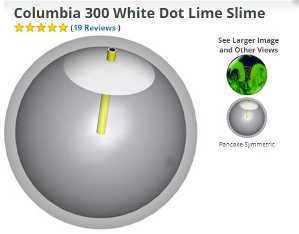
Plastic Balls with Full Sized Weight Block
The full sized weight block is for the advanced bowler looking for a ball with the ability to hook for a dry lane condition.
A plastic ball has a hard cover stock which does not allow for much friction from the lane to help it to hook. A weight block allows for a mild hook.
A bowler having problems with a ball hooking too much on drier conditions, may choose to add a plastic ball with a full weight block to his arsenal.
This will allow the bowler to maintain a controlled hook for better pin carry on the dry lane condition.
Some beginner bowlers just want to see the ball hook, so this is a good inexpensive ball for conventional grip.
Beginners and Intermediate Bowlers
If you are a beginner and you have bowled before, then you have some idea of what you want. Straight bowlers who want to continue to bowl straight at the pocket, should be happy with the cheaper plastic balls. As you can see,they are available in cheaper versions as well as more expensive options for bowlers who want to see some hook in the ball as it rolls toward the pocket. This is the conventional grip type bowler.
If you are thinking that you might want to try hooking the ball, then the Urethane ball is a good choice.ball for bowlers learning to hook the ball for the first time.The lower cost of the urethane ball and comfort of a more controllable hook make it a good choice for beginners.This would be the bowler who is considering a fingertip style drilling.
Urethane Bowling Balls
These balls were the rage of the 80’s years ago. That is when the weight blocks were just being introduced into bowling.
I used the urethane early on in my bowling years, and they are still popular today.

It was a different cover and core back then, but Hammer reintroduced the ball with a newer weight block and slightly different cover. So, it’s a bit higher tech ball now.
They are considered a lower-end beginners ball, and are inexpensive.
Urethane is making a comeback and several titles have been won recently with urethane cover stocks. These balls are less aggressive than the reactive resin, and allow a more controllable hook. That’s what makes them a great ball for beginners learning to hook the ball.
- Cost- generally range from $50 to $200
- Conditions- dry to medium oil
- Weights- 6, 8 thru 16lbs
- Core type- Asymmetric and Symmetric
- Performance rating- pro, high, advanced, performance, and entry levels
Bowlers who are looking for the best performance they can get are looking at the reactive resin bowling balls. Intermediate bowlers look at cost and bowling balls that have increased friction properties for achieving the best angle for more pin carry.
How To Buy A Bowling Ball For Intermediate And Advanced Bowlers
The advanced bowlers are also interested in friction properties, but also may look for different Rg factors to gain more or less revs on the ball. This will produce dramatic results in pin carry, and also produce some ugly wide splits on missed shots. The trick is to maintain that “sweet spot” for strikes and avoid those poor shots.
Reactive Bowling Balls
Reactive bowling balls have varying amounts of resin particles infused into the formula to make the ball porous and absorb oil. This will actually clean the lane of oil and enable the ball friction to increase.
These balls cost a bit more but can tweak your game and raise your average dramatically. This group is one of the strongest hooking balls on the market and are generally for intermediate league and advanced tournament bowlers.
Balls in this category are for serious bowlers who expect high performance from this category. They produce a strong back-end reaction with high pin carry. Lately, however the manufacturers are also offering entry level balls in the reactive ball category as well.
- Cost- range from $51 to $200
- Conditions- some medium oil, mostly heavy oil conditions
- Weights – 10 -16lbs
- Core Type – Asymmetrical and Symmetrical
- Performance- pro, high, advanced, performance, and entry levels
The Reactive Resin bowling balls come in three different categories
- Solid Reactive
- Pearl Reactive
- Hybrid
Solid Reactive Bowling Balls
The solid reactive cover stock is referring to the highest amount of porous reactive particles in the cover material. They tend to be slightly more pliable in material hardness as well.
These are the balls that work well on fresh or heavy oil, because they have the highest friction factor.
Solid reactive balls are the smoothest and strongest hooking balls delivering the biggest backend reaction and pin carry. They will hook early and use up energy sooner, delivering a more controlled backend reaction.
These are also made in many degrees of friction levels, allowing for a wide range from strong hooking balls to milder,more controlled versions. These balls are available from entry level to pro level.
The balls surface come in smooth, buffed and sanded covers out of the box. Bowlers can also customize the ball surface to match their individual skills and methods. A shined ball will hook less than the rough sanded dull finishes. So, the surface can be fine tuned with a surface change, making a shined ball dull for a ball that hooks sooner.
Pearl Reactive and Hybrid Reactive Bowling Balls
The pearl and hybrid reactive bowling balls are a combination of polyester (pearl) particles and resin particles that change the way the ball reacts. Pearl reactives are made to skid more through the oil and save energy and delay the hook. Hybrids are the best of both worlds. They allow more friction in the oil, and save some energy for good backend reaction.
Pearl Reactive Bowling Ball
The pearl reactive bowling ball has a cover stock that is lowest in friction of the reactive balls, and is normally a shiny, somewhat harder finish.
They will skid more thru the oil and save up energy. And when they exit the oil pattern, they have enough reactive particles to create friction on the dry. It will go longer and store it’s energy to deliver that strong back-end finish.
This is the ball a bowler will use on the lanes that are a drier condition, or have broken down in league or tournament play. If you bowl in a heavy oil situation, the pearl finish may not do as well as a dull finish ball. This can be tweaked somewhat by ball drilling and RG factors.
- 15 – Pearl Reactive Bowling Balls from $51 to $100
- 46 – Pearl Reactive Bowling Balls from $101 to $200
Hybrid Reactive
The hybrid reactive coverstock is one of the newest of the reactive covestocks.
As I mentioned earlier,this is a mix of the pearl and solid formula.

By combining the pearl and solid, the result changes the friction of the ball to react like a solid in the oil and a pearl when it exits the oil and hits the dry surface area of the lane.
So, the ball hooks a little slower in the oil and comes on stronger to the pocket. For that reason, the hybrid is considered to be the best of both worlds, between solid covers and pearl covers.
How to Buy a Bowling Ball Using The Perfect Scale
The Perfect Scale is a copyrighted scale from Bowlingball.com that you can use to determine what ball you may want to buy. With a plastic ball starting at 5, and the highest rating viewed yet at 235, it can help determine how to buy a ball.
Also helpful is the Bowling Ball comparison charts that they offer along with their Perfect Scale. Choose the ball you like and compare it to other balls, maybe one you are already familiar with.
Asymmetrical vs Symmetrical
You will see the core in the ball descriptions being described as Asymmetrical or Symmetrical. I often wondered why some balls hooked sharply and some were just smoother hook. Nobody ever mentioned it could be the type of core in the ball making it do that.I would often hear other bowlers mentioned things like”That ball had a great core in it”.
I wondered about it and my basic core education began. And I don’t mean I am expert by any means. I just wanted to find out what the difference between Asymmetrical and Symmetrical cores happened to be.
So, I researched the topic and discovered why some balls had a smooth motion. They were Symmetric cores. Asymmetrical cores tend to have a quick snap on the backend. That explained it!
I still use both cores. I prefer the symmetrical cores because of the smoother motion. But, then again, sometimes that little backend kick from the asymmetrical core works better.
If you are interested in the differences between Asymmetrical and Symmetrical cores, you may want to read my article on Asymmetrical vs Symmetrical Bowling Balls
How To Buy A Bowling Ball Using Radius Of Gyration And Differential
Radius of Gyration(RG) and Differential
The Radius of Gyration is a term used to gauge how the weight of the ball is distributed on the (y) axis or the ball pin as the ball rolls down the lane. People often refer to spinning figure skaters. When they have their arms out wide they turn slowly, but when they pull them in they spin very fast. Imagine them holding onto a pole, that would be the ball pin in the core.
High vs Low RG
The scale of RG values range from 2.46 to 2.8.The higher RG balls have higher weight closer to the coverstock. It creates a slower spin and will cause the ball to skid more thru the oil, and give you a delay in your hook. This is good for drier lanes, because It saves energy and allows the ball to go longer or farther down the lane before hooking.
The lower RG has its weight closer to the center of the ball. This will make the ball spin faster. As a result, this would create a lot of hook on a dry lane. So, the lower RG would be better suited for heavier oil conditions.
Lower RG hooks earlier, and uses up its energy sooner, for a milder hook on the backend.All of this change in the ball friction can be adjusted even more. By using different coverstocks that produce higher or lower friction changes the differential or flare on the ball.
A lower RG ball with a low differential will hook sooner, and produce a mild hook.But,a lower RG ball with a high differential or flare creates an earlier hook with a larger/stronger arcing finish.
A higher RG ball with a low differential will create a delayed hook with an angular backend motion. And a higher RG ball with a high differential will produce a ball that goes longer and is stronger and more angular on the backend.
Differential of RG (Track Flare or Hook Potential)
Differential of RG is an indicator of a balls hook potential. High Differential of RG balls have a high hook rating or track flare. Low Differential of RG balls have low track flare. Different drilling layouts can enhance the ball friction in different ways. Consequently, the roll can be tweaked to adjust whether the ball hooks slightly earlier or is delayed.
If you want to see the differential of RG (track flare) on your ball, check the rings of oil left on your ball after it is thrown down the lane. The closer the rings are together, the lower your track flare or differential, the lower your hook potential.
The wider the rings are apart, the higher your differential, and the higher your hook potential. Manufactures have simplified all this and provide hook ratings and flare potential to help you determine what you want.
Here is a video from Storm that visually explains Radius of Gyration,Differential,Symmetrical vs Asymmetrical effects, and a visual of coverstock design.
I hope my discussion is a bit simpler for everyone and the videos help explain things better. If you have any questions or comments, please leave them below. Let me know how I did or what I could add to make this guide better. Good luck and good bowling.
Chas
Get more Bowling Supplies, Check out my other pages:
Check out more products Here
Thanks for your support!


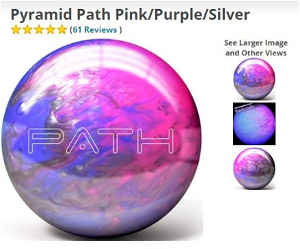
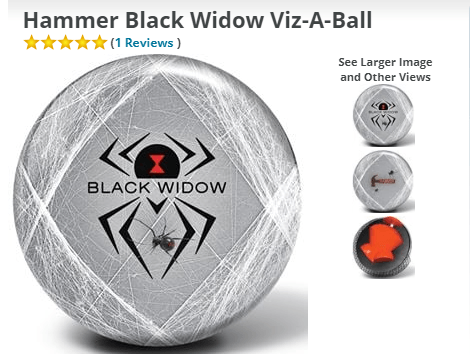
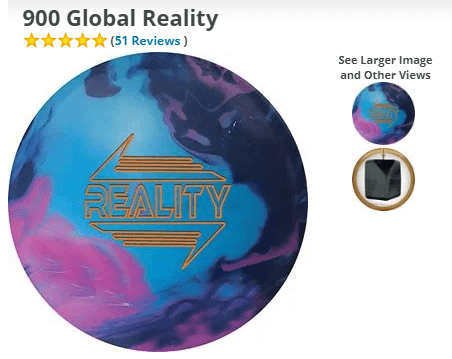
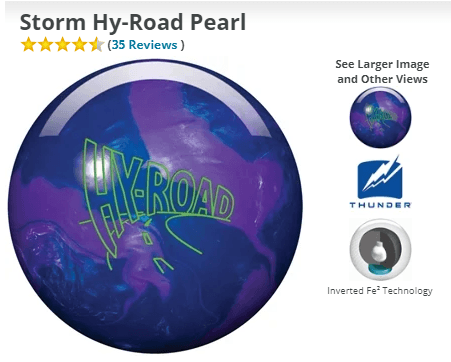
Really do not want to buy another ball but I am not getting enough strike action with what I currently use in league and tournament play. What change can I make with a Raw Hammer from 2015? It breaks too hard in the dry lane condition. Also, I use a Track 2 and it too moves to the brooklyn side before leaving me splits. The best ball for the house conditions seems to be the Black Hammer from 1980. I use it to strike in house and dry conditions as the game moves on. Chas- Are there any other equipment purchases that can compete on today’s lane conditions.
Hi Tom,
When I have a ball that hooks too much, I do one of two things (sometimes both but one at a time) I change the surface to a higher grit. I don’t know what the surface was back then, I would guess at 1500 grit. If you want it to hook less, you can change the surface to something like 2000 or 3000 grit finish. And you can shine it also. Both methods will let the ball travel down the lane farther and tame that back-end down some. You need a ball spinner to change the surface, or just talk to your local pro shop and tell them what you want to do.
Yes, there are many balls that are competitive on todays lanes. Your Black Hammer was a urethane ball if I remember correctly, so you could try one of the newer urethane balls.
Read my latest article about urethane, and check out some of the ones available. And again, talk to the guys in your local Pro shop at your bowling alley. They know what condition you are bowling on, so I would think they know of a few balls you might like.
Thanks for leaving a comment, and stop back soon. let me know how you make out!
Chas
Hello, Thank you so much for your very informative article. I have a six year old nephew with Down syndrome that loves to bowl. I would like to give him his own bowling ball. I gather he would use solid plastic. Since he uses a ramp, I think an 8lb ball would be better, right? Probably a dumb question, but where/how do we get the finger holes drilled? Any other advice? Thank you!
Hi Auntie C
Thanks for the detailed breakdown for buying a bowling ball. I can now make an informed decision to purchase when I am ready to do so. Thanks again 🙂
Hi Martin,
You are welcome. I am glad you found the guide useful. Please feel free to tell others about my guide.
I know when looking for a ball, I try to get all the information I can.I did not know of anyone giving a good rundown on all the balls available, so I felt it might be a good idea for others to have some information.
Thanks for taking the time to leave a comment.
Chas
Wow! So much great info here on choosing a bowling ball. I had no idea it was such a science. I like to bowl from time to time, but I only ever hire the equipment and always struggle with the right ball. It seems to take me at least one whole game before I feel I have found the right ball, but I seem to fatigue quite easily into the second game where my fingers are getting sore and I am breaking nails. I am pretty sure my technique is awful, do you have any tips for someone who is just a casual bowler when it comes to basic technique of bowling in order to reduce fatigue? Eg should I be focussing more on a slow gentle bowl to improve arm swing and angle of the ball when I let it go?
Hi Liz,
Thanks for the kind words! When you use the house balls and rent shoes it is much harder and not very comfortable. If you ever do buy your own ball and shoes, you will have an easier time. Here is a good article for you Hook Bowling and Getting Started. This article will help explain things for you when you are starting out.
Well, bowling isn’t the best thing for long fingernails, I have to keep mine trimmed fairly short to bowl. If you don’t bowl regularly, you will feel a little tired after a game or two. You may be trying to help the ball to much, Just let the ball fall naturally from the back swing, let gravity do the work! You won’t get so tired!
Hope that helps!
Thanks for stopping by,
Chas
So thorough! It’s been a while since I’ve been to the lanes. I have been looking into getting back to it, although I’m no longer on the league. I’m definitely in the market for another ball. This is a very helpful guide! What can happen if you get a ball that’s too light? I’d like to prevent any pain to my back
Hi Sydney
I am very pleased about this bowling ball game, I think this article cover all information needed. I really appreciate the tips that are given, and prices, well as a beginner I will leave my eyes open. The question is that: all countries are covered? Can I find this PowerBall in South Africa?
Hi Sanele,
I take it this is a new experience for you? This article will help you choose a ball, but you will find more information about bowling for beginners in my article Hook Bowling and Getting Started.
If you purchase the ball online, you might as the fellows at The #1 Online Store about shipping to South Africa? I can’t say one way or the other? You will have to ask them.
Thanks for stopping by,
Chas
Very informative article. I hope to one day take up bowling again. If I do, this will help. I had no idea there were so many differences in balls. I thought the only difference was the weight. Now I know how the pros get the ball to hook so much. I just thought they had a great deal of wrist action. I also didn’t know a bowler could use more than one ball in a game. Maybe I was too much golf. 🙂
Hi Rick,
I am glad you liked the article. You may find the number of balls available today is phenomenal. Most are targeted to the league bowler or tournament player.
When you are first starting back, I would just start with a low end ball, around $80. Bowl a year, then decide what you might want to try in the higher priced balls.
The pros have every ball they could want at their disposal. I knew a friend that bowled out on the tour, and it was nothing to have 5 or more of the same ball drilled 5 different ways! If you are sponsored, they don’t cost you!
So, the pros have a ball for every condition, and yes, they know that the hook improves your chances for scoring!
Now golf, I don’t do well!
Thanks for stopping by,
Chas
Great article, I never really knew where to start always getting it wrong when I go bowling. Some bowling balls I like for the finger size holes but may not be the best weight for me.
This guide makes it easier to break it down to find the perfect bowling ball of my own. I have always wanted to be able to take my own and not spend most of the game play working out which ball is best from the rack.
Thank you!
Hi Dianne,
Thank you! When you decide to buy your own bowling ball, the fingers are fitted exactly for you, and what a world of difference it makes! It improves accuracy, and just makes scoring so much easier. People usually buy shoes at the same time, and they help as well. The rental shoes are always slippery on the lanes and not real comfortable.
Unless you are going to join a league and bowl regularly every week, it doesn’t make a lot of sense to buy your own ball and shoes. But if you decide to bowl often, then the proper fit helps.
You can read my article for beginners Hook Bowling and Getting Started. It may help .
Thanks for stopping by
You have no idea how grateful I am for this guide. I’m a beginner, but very curious and excited to start bowling, and yes, you are right, it is indeed very overwhelming when it comes to choosing for the perfect ball.
I’m pretty sure many newbies like me are extremely grateful we found this site and this post in particular. Definitely going to keep checking on this site!
Hi Isaac,
Thanks Isaac, glad it was helpful! Today, there are so many different balls available, it can be overwhelming for sure. When you first start out, it is more about learning the game, and how to target the pins. So, a bowler like yourself should look at the lower end balls, that have controlled amounts of hooking power.
I think you should also read my article for beginners Hook Bowling and Getting Started. It will help to sort thing out a bit.Good luck with your bowling!
Thanks for stopping and leaving a comment!
Chas
My brother’s birthday is coming and he has been playing it for a couple of years now and I can say he is an intermediate bowler. After reading this, I should go with Reactive Bowling Balls, right? My budget is around 100 dollars so can you recommend one which is around $100?
Hi Furkan,
I like the Roto grip Hustle Ink..selling for $89 now http://shrsl.com/xvv1….It is a solid and it is doing ok on the local alleys….medium oil. but, if he is bowling on dry lanes or throws his ball slow…then it may be too strong. Also you must know the weight of ball he is using,then you could buy it and let him get it drilled to his specs. He might like the Hybrid Ink if he doesn’t want a srtong hook. both balls compare very close, the main difference is the Ink has 3″ of flare(sharp hook) while the hybrid is a low flare. http://shrsl.com/xvvw
Chas